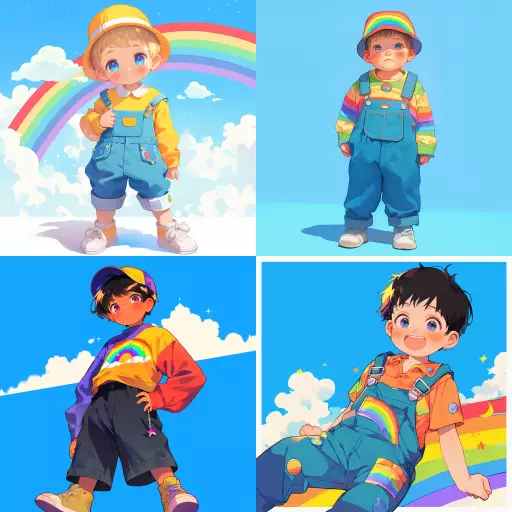Explore the Best AI Image Gallery

Painting with Pixels: AI Image Generations Impact on Design
The creative landscape is undergoing a seismic shift as Artificial Intelligence (AI) steps into the realm of image generation. Tools powered by deep learning algorithms are now capable of producing stunning visuals, blurring the lines between human creativity and machine ingenuity. This burgeoning technology is poised to revolutionize the design industry, offering exciting new possibilities while raising important ethical considerations.
A Palette of Possibilities: AI Image Generation in Design
AI image generation tools offer a vast array of applications across various design disciplines:
- Logo and Branding Design: Generate unique and eye-catching logos tailored to specific brand identities.
- Website and App UI/UX Design: Create compelling visual interfaces that enhance user experience.
- Marketing and Advertising Materials: Develop captivating visuals for social media campaigns, brochures, and other marketing collateral.
- Illustration and Concept Art: Produce imaginative artwork for books, games, and other creative projects.
- Product Design Visualization: Rapidly iterate and visualize product concepts before physical prototyping.
The Human Touch: Collaboration Between AI and Designers
While AI image generation tools are undeniably powerful, they are best viewed as collaborative partners rather than replacements for human designers.
Designers bring their expertise in aesthetics, user psychology, brand storytelling, and conceptual thinking to the table. They guide the AI, refine its outputs, and imbue the visuals with the human touch that makes them truly impactful.
Navigating Ethical Considerations
The rise of AI image generation also raises important ethical considerations:
- Copyright and Ownership: Questions arise regarding the ownership of AI-generated images, particularly when they are based on existing copyrighted material.
- Bias and Representation: AI models can inadvertently perpetuate societal biases present in the training data, leading to skewed or discriminatory representations.
- Transparency and Accountability: The decision-making processes of AI algorithms can be opaque, making it difficult to understand how images are generated and address potential issues.
The Future of Design: A Symbiotic Relationship
Looking ahead, AI image generation is set to become an increasingly integral part of the design workflow.
We can expect to see:
- More sophisticated and versatile AI tools: Advancements in AI will lead to models capable of generating even more realistic, diverse, and customizable images.
- Seamless integration with design software: AI image generation will be seamlessly embedded within popular design applications, streamlining the creative process.
- Emphasis on human-centered design: Designers will continue to play a crucial role in guiding the ethical development and application of AI, ensuring that it serves human needs and values.
The fusion of AI and human creativity has the potential to unlock unprecedented levels of innovation and expression in the design industry. By embracing this evolving landscape responsibly and ethically, we can harness the power of AI to create a more imaginative and visually captivating world.